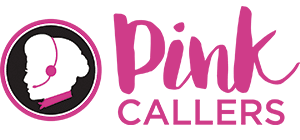I know what you’re thinking. That this title is extremely clickbaity and that there probably isn’t going to be much sustenance to this blog.
Well, you’d be half-right. That title is quite clickbaity, but this post is going to be filled with so much damn sustenance you’ll have to loosen your belt after you’re done reading it.
*Ahem*… Segway.
So, what is the most important rule in copywriting? You could ask 100 different copywriters, and you’d get many different answers.
A quick Google search for that question yields plenty of results. Some say it’s to keep your writing simple. Others say the key to copywriting is to spend as much time on headers as the body copy, or to always talk about benefits over features.
Guess what—all those are wrong! Well, kind of.
The actual most important rule in copywriting is that the purpose of the 1st sentence is to get the audience to read the 2nd sentence. That 2nd sentence then compels them to read the 3rd, and so on.
Those other rules I just listed fall into the most important rule. Keeping the copy simple will get your audience to keep reading. Well-crafted headers will compel them to read what’s under said headers. Talking about benefits is more engaging than features and will keep them reading too.
Essentially, all the best practices of copywriting can be boiled down into “each sentence should be written to get the audience to read the next sentence.”
So, how can you ensure that every sentence you write is with intent and keeps the audience compelled enough to continue reading? Here are some tips to get you there.
How to Get People to Keep Reading Your Content

Know Who You Are Writing Towards—Personalized Content is Winning Content
Not knowing who you’re writing for makes it extremely difficult to write engaging copy that keeps the reader reading. If people come across your website or blog, they are likely looking for a solution to a problem they have. If you don’t know the problem they have, then your content will miss the mark in terms of being helpful to them. And if they start reading your writing and don’t see themselves in the problems you’re describing, they’ll back out and look elsewhere.
At Hook, we create customer personas with our clients to really dig into what it is their ideal customers’ problems are. Then, we create content ideas based on this information, making sure to call out their issues and how our client can solve their problems.
Don’t Be Redundant
It is sosososososo obvious when someone is writing a piece of content just for the sake of ranking on Google and not actually because they are interested in sharing their knowledge on the topic and helping someone find answers to problems they need.
I get it. I’m an SEO copywriter. Writing content that ranks is kind of my job. But, you still gotta provide some value. Otherwise, people are going to peace right on out your site and find someone that actually writes without being repetitive.
So, be simple and be concise with your content. Don’t keep writing the same stuff over and over again just to hit your word count and keyword stuff the everliving sh*t out of the content.
Be Funny—Or At Least Try
Don’t be afraid to throw in the occasional joke. It doesn’t have to be laugh-out-loud funny, either. If you think it’s funny, it’s likely someone else will too. Keeping your content light and humourous is a fantastic way to keep it engaging.
Engaging content leads to more reading, and more reading leads to more people reaching the CTA and more people reaching the CTA leads to more conversions and more conversions leads to more sales and more sales leads to more money, and more money leads to nicer things and nicer things DOESN’T lead to a better life. But it does lead to a more profitable business, which is good.
So, keep it light, keep it fun.
The More Visual, the Better
So, this isn’t so much a copy tip, but more of a content formatting tip. Breaking up your content with an image or graph or table is a fantastic way to help the reader along. Coming across a giant page of text is daunting and may lead your audience to back out find something a little more inviting. Bullet points are another great way to make your content more consumable.
For example, a ‘key takeaways’ section ensures that the audience can find a quick, succinct form of your content so they can get the key points if they don’t have time to read the entire thing.
KEY TAKEAWAYS
- The most important rule of copywriting is to craft every sentence with the intention of encouraging the reader to read the next sentence.
- Understand who it is you are writing for and make sure to call out there problems and how you’re the solution.
- Don’t just write words for the sake of jacking up the word count. Be concise and deliberate with every sentence.
- Don’t be afraid to incorporate some humor into your writing.
- Keep things visual and easy to consume with images, graphs, bullet points, etc.
Thanks for reading ‘The Single Most Important Rule in Copywriting!’















